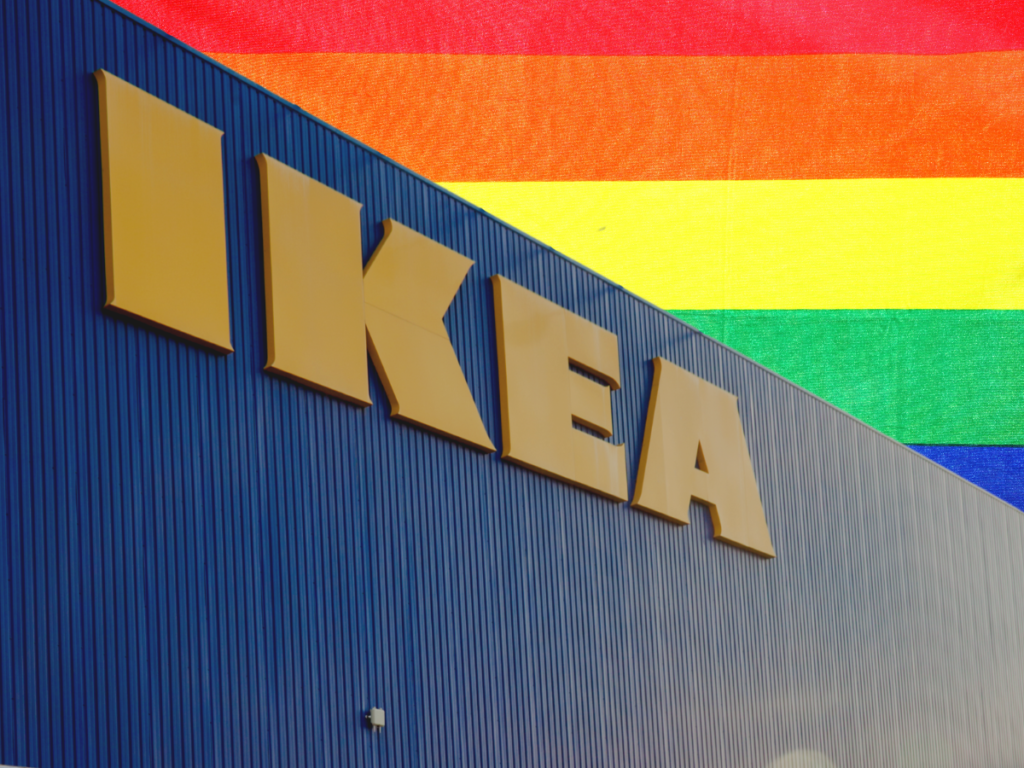In 1994, IKEA aired their TV ad “Dining Room” and became the first brand to release a mainstream commercial featuring a gay couple. Fast forward to 2022, and gay couples featured in advertising no longer seem radical.
In fact, with so many companies jumping at the chance of appealing to an LGBTQ+ audience, it’s hard to tell if their allyship is genuine or performative. So why was this such a big deal?
In the early 90s, culture and society in general were much less accepting and affirming of the LGBTQ+ community. This commercial was released during the AIDS crisis. This was 3 years before Ellen Degeneres came out and 21 years before same-sex marriage was legalized in the US. It was hard to be openly gay, which can be seen by the sheer amount of backlash that IKEA faced because of this advertisement.
The reason why IKEA decided to go against the grain and produce this ad is the very same reason behind how they became an internationally known brand. “Dining Room” is a part of their “Lifestyles” campaign that focused on portraying IKEA’s audience, including their less represented ones. Patrick O’Neill, the art director of “Dining Room”, says in an interview with Adweek that the ads were based on real people they saw walking into IKEA. O’Neill mentions how Donny Deutsch, former Chairman of advertising firm Deutsch Inc, “felt like it was a true representation of IKEA’s values, which is they’re always accepting of everyone.”
Looking back at this ad 28 years later, we can see how this move ultimately paid off for IKEA and how society has changed since.
Staying true to your brand pays off.
IKEA is notorious for their quintessential Swedish brand identity and for keeping their Scandinavian values despite being an international company. Undeniably, “Dining Room” was progressive for its time, even by Swedish standards. Still, the cultural difference between Sweden and the US could be the reason behind IKEA’s “long history of including gay and transgender themes in its advertising”.
Being LGBTQ+ wasn’t always accepted in Sweden, but the country is considered a forerunner in pro-LGBTQ+ legislation. For example, a cohabitation law in 1988 gave partnerships outside of wedlock the same rights as married couples. Moreover, according to The Williams Institute’s Global Acceptance Index, Sweden ranks 4th in LGBTQ+ acceptance while the US ranks 23rd.
The content of IKEA’s “Lifestyles” campaign also reflects their brand. Steve Penhollow explains in a Medium article that “IKEA’s success lies in the suggestion that you are building not just a bookcase but an entire lifestyle”. In the commercial, we see how the dining table accompanies the expansion of their family. IKEA effectively illustrates how their furniture will be there at every life stage for people of all different walks of life.
Representation is important.
What’s groundbreaking and unique about this ad is that it portrayed a gay couple in a positive light during a tumultuous time period. Ellen Carton, executive director of the New York chapter of GLAAD, said the ad showed “an aspect of gay life that people never see: our daily lives. Instead of showing gays and lesbians marching at gay rights rallies or suffering from AIDS, the IKEA ad humanizes us. The importance of that cannot be overstated.” What people see on TV often influences their perceptions and opinions. In the same AdWeek article, O’Neill noticed how the culture around the LGBTQ+ community has changed since the commercial aired.
Moreover, it paved the way for many other companies to start using LGBTQ+ themes. For example, Unilever’s “Go Gay” Axe commercial that came out 3 years after IKEA’s. An article by Bustle points out more ads like Cheerios’ “The Cheerios Effect” and Honey Maid’s “Dad and Papa” that similarly show non-traditional families. Ads like these have become commonplace and for a good reason: by including positive and diverse representation, brands can inspire social change and better reflect society as a whole.
